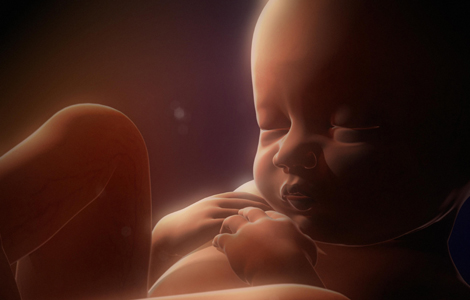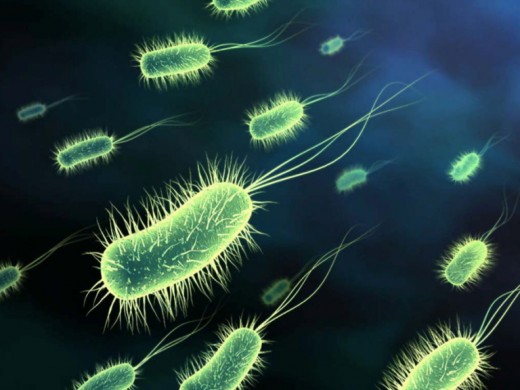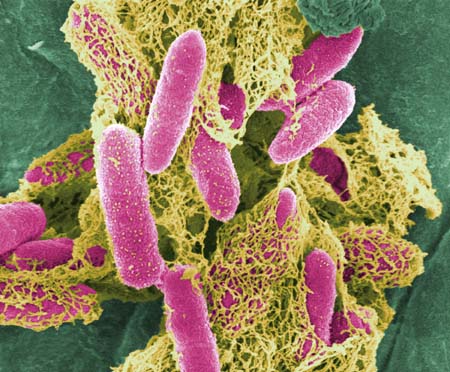New Research in Babies Microbiomes - Babies May Not Be Born Sterile But With Their Own Bacteria!

Babies Microbiomes
A microbiome is defined as the total amount of microbes and environmental interactions in a particular environment. Humans have a variety of different internal and external microbes that have numerous amounts of functions.
Bacterial mutual relationships are crucial for our survival and an imbalanced gut flora may lead to a number of different disorders.
A pregnant mother is riddled with her own gut flora and numerous amounts of bacteria on her skin from the external environment. According to medical science it is thought that the fetus lives in a sterile environment and that a mothers bacteria does not affect the fetus.
The flora of bacteria in the human body is extremely important as research has showed that early bacterial flora will shape our immune systems and influence out risks of disease as we get older.
New research into how a microbiome in humans initially develops has put a spin on how medics think about a fetus’s first microbiome. Evidence is now showing that babies are born with the bacteria that colonise the mother’s digestive system in the womb. Originally the first bacterial flora to colonise an infant was thought to be obtained by the mother’s vagina or the environment the infant was born into.
Information into how bacterial flora affects different systems and diseases in the body can be used to ensure a baby is given the healthiest start in life.

Esther Jimenez and her colleagues at the Complutense University of Madrid, Spain were the first to show evidence suggesting mammals may develop a microbiome before birth in the womb; published four years ago. Jimenez conducted a study using mice, in which a genetic marker was added to milk. The milk containing the labelled bacteria was then fed to eight pregnant mice.
In order to try to control as many external variables that may occur the mice had their offspring delivered by caesarean section in a sterile environment. This procedure took place one day before the mice were due to give birth. Each newborn had its first faeces (meconium) collected for examination; this is normally passed in the first few hours after a baby is born.
The meconium was found to contain the labelled bacteria, suggesting that the bacteria have transferred from the mother’s digestive system to the fetus during pregnancy. (Jimenez et al, Research in Microbiology,DOI:10.1016/j.resmic.2007.12.007)
Pilar Francino and her colleagues at the University of Valencia in Spain decided to conduct a study to see if the same effect occurred in humans. The study involved collecting and freezing the meconium of babies from 20 different women. To eliminate any external factors affecting the study the outer layer of each sample was removed. Removal of the outer layer would rule out any bacteria that may be picked after birth. The meconiums were then investigated for any bacterial DNA.
Pilar Francino et al found that the babies’ meconium contained bacteria. The bacteria found in the meconium is a big discovery but what was more impressive was how developed the bacterial communities were. The bacterial communities seemed to fall into two different categories.
- Around half of the samples were dominated by bacteria that produced lactic acid such as lactobacillus.
- The other half of the samples contained enteric bacteria such as Escherichia coli.
Meconium is a tar-like substance, making is extremely hard to extract DNA from although freezing the meconium makes it easier to extract DNA.
New technology and laboratorial procedures have helped the discovery of the early development of microbiomes. Previous DNA extraction techniques were not sensitive enough to pick up bacterial DNA in the meconium.
Research has showed that microboimes can influence our risk of disease therefore Francino’s team checked on the health of infants at the age’s one and four. The results showed that infants born with more lactic acid bacteria had a higher risk of developing asthma-like symptoms, those born with more enteric bacteria were at a greater risk of eczema.

A mother’s lifestyle during pregnancy has been linked to the first bacterial communities that develop in a fetus. Mothers who consumed organic foods during pregnancy promoted lactic acid bacteria where mothers who smoked seemed to encourage an enteric microbiome. These findings were displayed at the international Human Microboime Congress in Paris, France.
There have been many suggestions into how the bacteria have found their way to the fetus. It has been suggested that the bacteria most likely transfer to the fetus via the placenta. This conclusion has been derived from blood being taken from the umbilical cord previously and bacteria being found; connecting the fetus to the placenta.
The suggestion that a mothers bacteria influences a babies first microbiome may be extremely important in developing the makeup of a babies microime before its born. The first bacteria that colonise the gut are thought to influence the bacterial species that follow it.
Imbalances in microboimes has been linked to different disorders such as irritable bowel syndrome to obesity. Altered microbiomes may even have an effect on personality and autism.
James Kinross, a surgeon at Imperial College London; who researches the gut microbiome.
“My view is that the first bacteria are very likely to influence the development of an infant’s gut and immune system."
Studies can be conducted to define which bacteria are the most important early on, and which bacteria may cause implications for later health and immune disorders. Pregnant women will be able to make changes to their diets and lifestyles to promote a microbiome that will benefit the fetus.
Doctors must now take into consideration that we are born with our set of bacteria, gut flora because standard medical teaching is that the fetus is sterile. Medical teams could attempt to change the course of disorder by identifying the missing bacteria and administering probiotics to the mother during pregnancy to replace bacteria missing or low levels.
Hopefully I have shed some light on new research that may change the way we can lower risks and prevent diseases that can develop in infants as they become older.
If you find my Hub interesting don't hesitate in leaving a comment, I would really appreciate it.
Thanks
Mike



